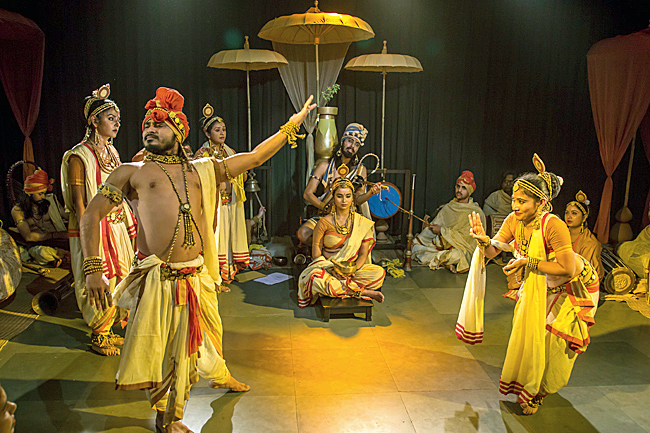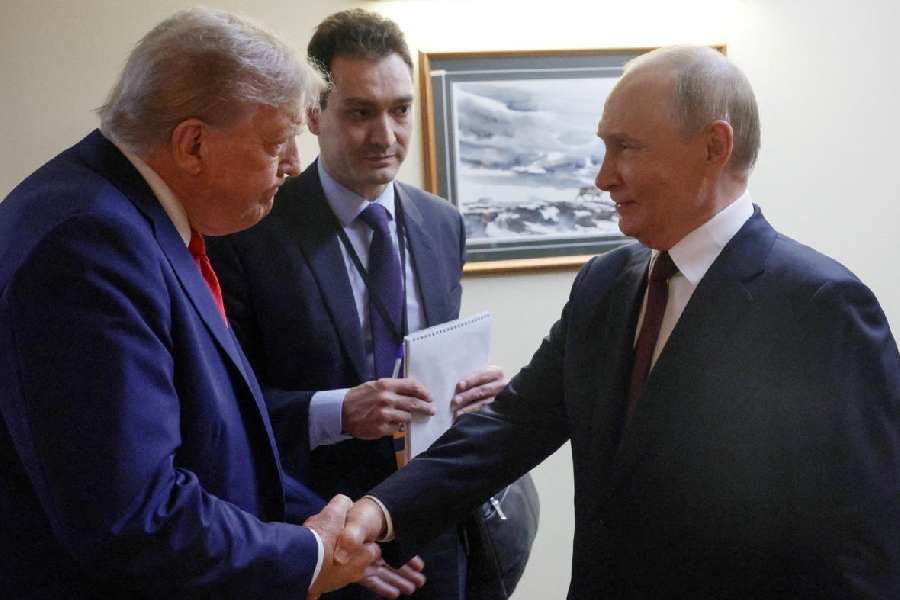Bhaanotsav, designed and directed by Piyal Bhattacharya, stems from his pervasive research on the reconstruction of the ancient Indian dramatic form as embedded in the Natyashastra. The performance, based on the monologues of Dahsarupaka, places two choreographic pieces of dance-poetry, the Bhaanak and the Bhaanika, in one coherent frame. Bhaana, the fifth of the ten forms of stage representations, is defined by Bharata as a one-act presentation built by the author in which the narrator or the sutradhar plays all the characters.This requires the actor to have an immaculate training in the form as revived by Piyal as much as it demands an understanding of the aesthetics of this ancient dramatic art from the audience.
I would focus on the conflicts, the confusion and the contentment of watching such an unfamiliar presentation. These highly stylized pieces, presented in Sanskrit or Prakrit in an abstract poetic form, already situates it in a codified idiom. Moreover, the plot does not rely on a series of events or a pinnacle of conflict but seeks to entertain and to propagate a doctrine. Some criticisms of such a classical art form often insulate its reception by stating that it is not for all to comprehend.
Interestingly, the origin story of the Natyashastra says that at a time when people took to uncivilized ways and hooliganism, Indra and other gods approached Brahma and requested him to give the people a toy which could work as a diversion and help them give up their bad ways. So Brahma created the Natyashastra as the fifth veda which lays out an art form that can entertain, enlighten and is accessible to all.
Piyal’s work attempts to restore this core idea of the Natyashastra. The script seamlessly allows important sections of the narration to be articulated in vernacular languages. He has reconstructed all the instruments, drawing inspiration from different cultural traditions in order to bridge the divide between the maarga and the desi. The elements of sound and sight have been skilfully harmonized to bathe the piece in an essence of the earth, the fire and the air.










